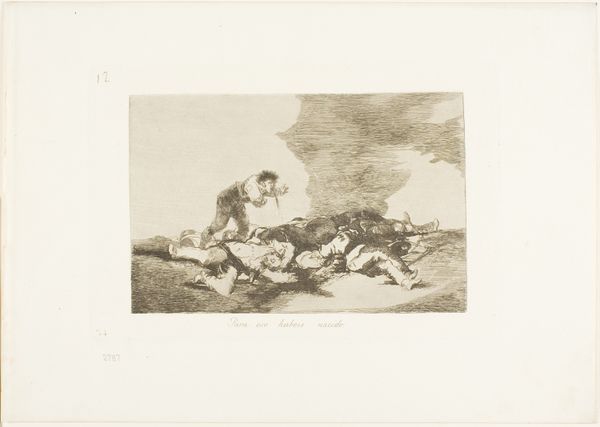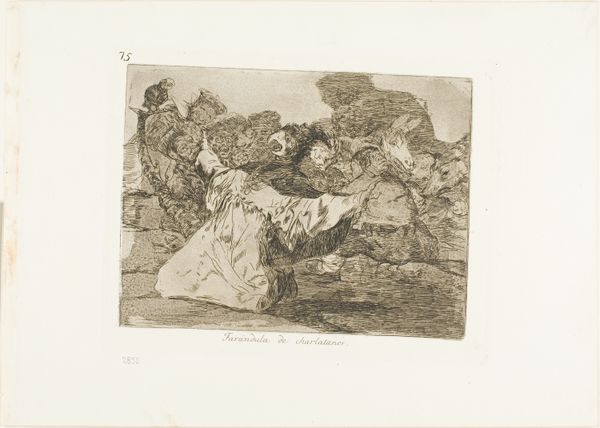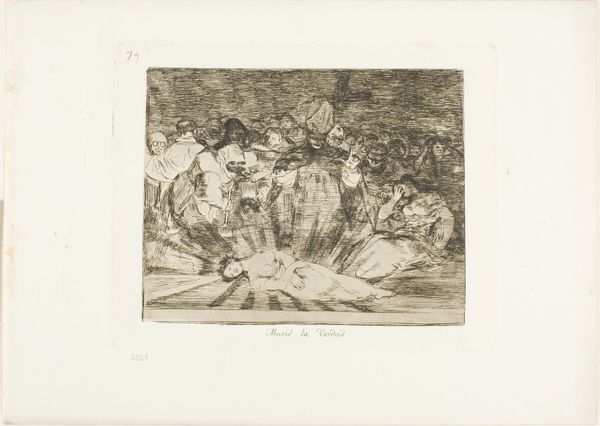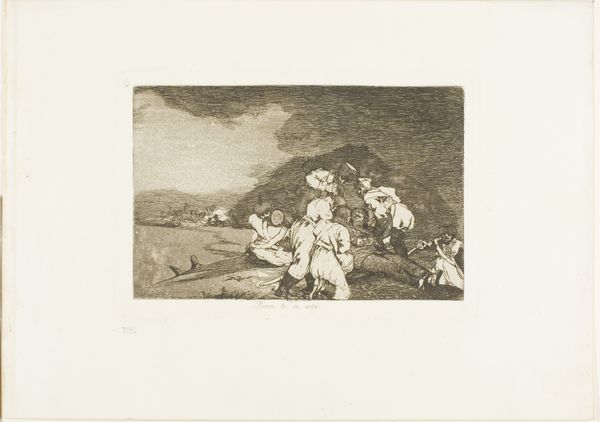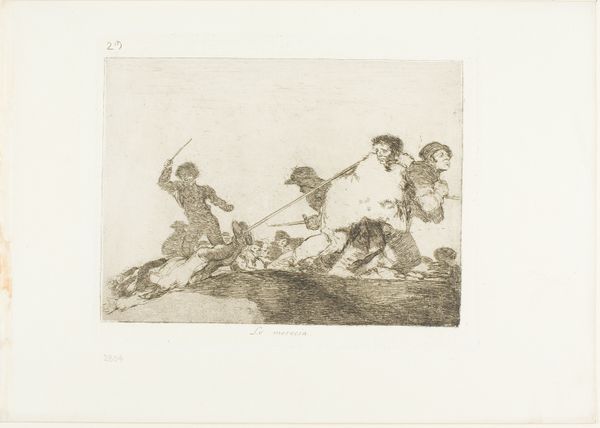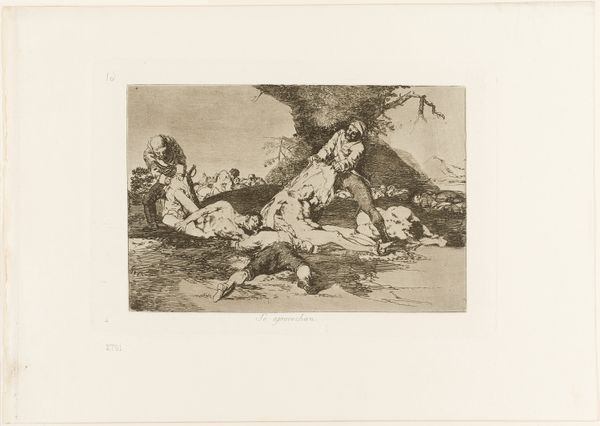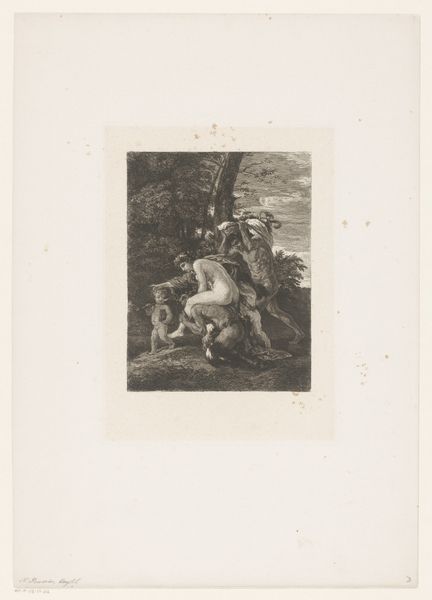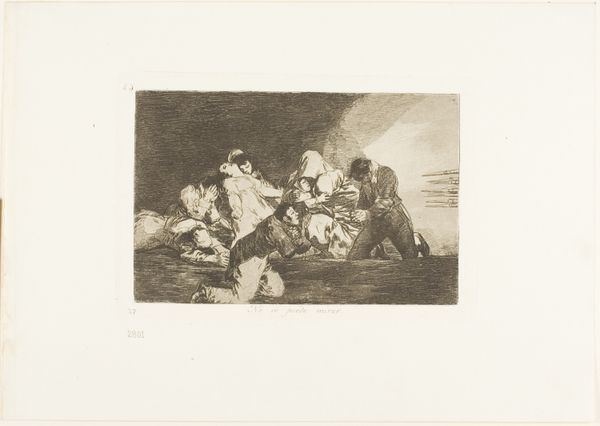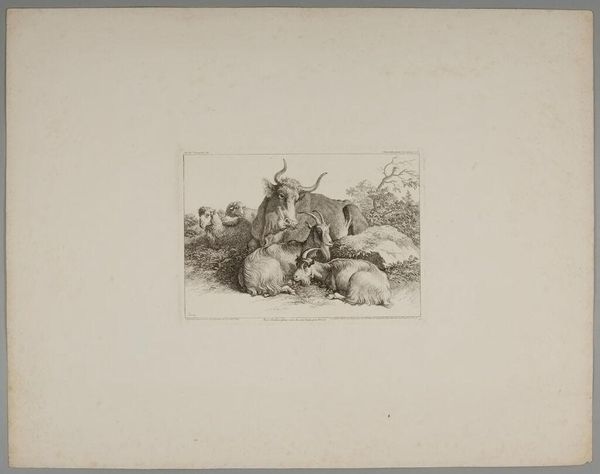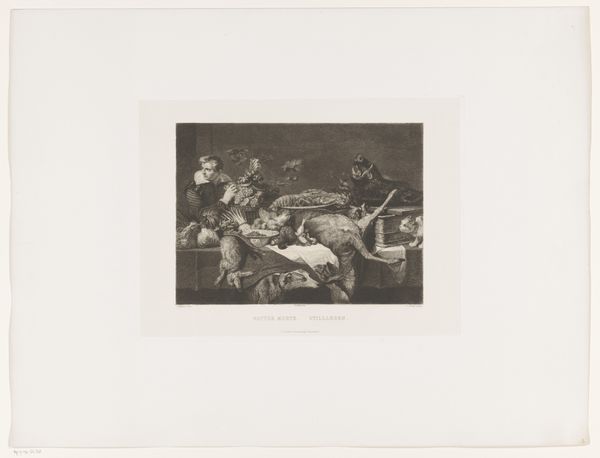
Charity, plate 27 from The Disasters of War Possibly 1810 - 1863
0:00
0:00
drawing, print, etching, paper
#
portrait
#
drawing
#
narrative-art
# print
#
etching
#
figuration
#
paper
#
romanticism
#
history-painting
#
grotesque
Dimensions: 130 × 193 mm (image); 160 × 234 mm (plate); 240 × 340 mm (sheet)
Copyright: Public Domain
Editor: We are looking at Francisco Goya’s “Charity, plate 27 from The Disasters of War,” created sometime between 1810 and 1863. It’s an etching printed on paper. It definitely feels like a stark depiction of suffering. What strikes you most about this piece? Curator: I’m immediately drawn to the physical act of creating this image. Think of Goya, amidst the turmoil of war, manipulating acid and metal to produce these lines. The printmaking process itself – the labor, the materials, the reproduction – becomes a critical component. This wasn't painting for a wealthy patron; it was a calculated, reproducible image meant for wider circulation, wasn’t it? How does the medium inform your understanding of the work's message? Editor: That's interesting, I hadn't considered the act of printing as part of the message. I guess because it's reproducible, that suggests the devastation wasn’t just an isolated incident. Curator: Exactly. Consider the "disasters" of the title. Disasters are never simply natural events but are intimately tied to material conditions and social structures. Think about the supply chains disrupted, the printing presses still operating, and who had access to these images. Etching, though capable of incredible detail, has a rawness, wouldn't you agree? How does that roughness connect to the brutal subject matter? Editor: Definitely, it's not cleaned up or glorified in any way. The starkness of the print adds to the sense of despair, because you realize this horror was real and not beautified in any way. Curator: It bypasses idealization. Look at the figure administering "charity." Her agency is defined by context: who controlled resources, determined who received help, and justified these actions in wartime? The materiality of the image, from the metal plate to the ink on paper, all speaks to a very particular moment in the history of production, violence, and representation. Editor: This makes me realize how important it is to think about where and when the work was created, and who had access to it, as much as how the figures are arranged. Thank you! Curator: Absolutely. Seeing art this way, grounded in its making and circulation, adds a crucial dimension.
Comments
No comments
Be the first to comment and join the conversation on the ultimate creative platform.
